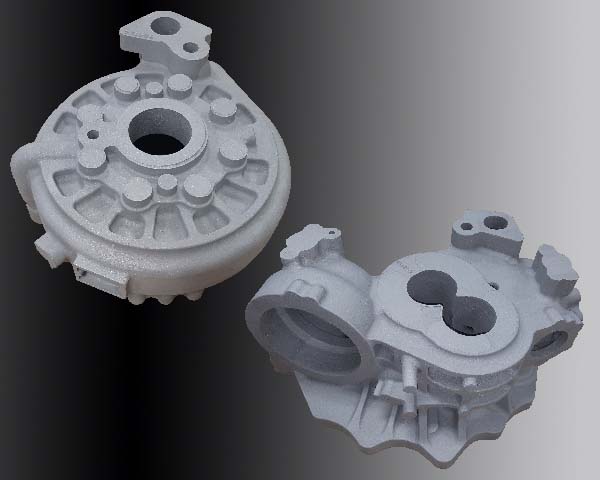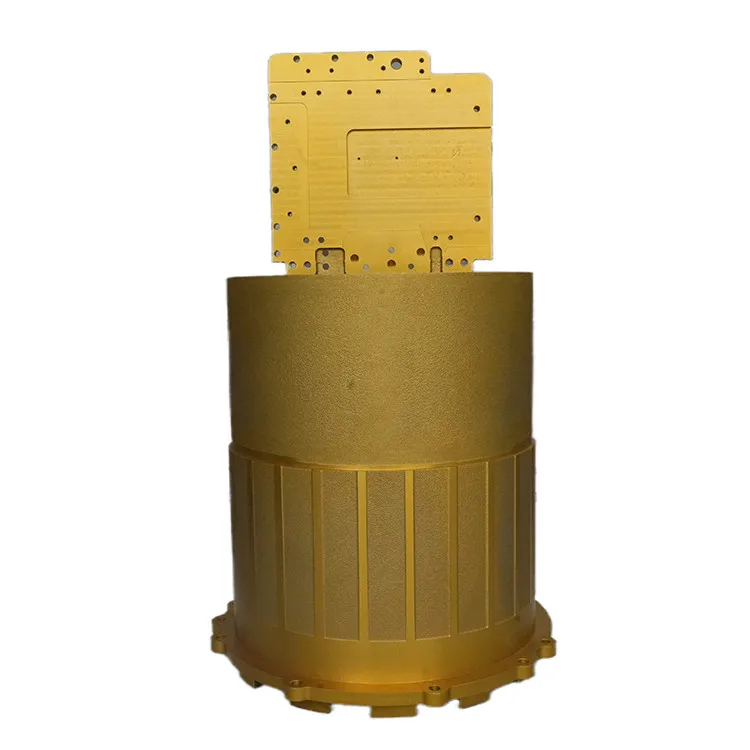Aluminum Casting Explained: Trick Truths and Insights for Sector Professionals
Aluminum casting works as an important procedure in modern manufacturing, forming parts throughout various sectors. Its varied methods, such as sand and die casting, accommodate various production requirements. The unique buildings of aluminum alloys boost their applicability, yet challenges remain in maintaining quality and effectiveness. Understanding these elements is vital for sector specialists. What are the most recent innovations and ideal methods that can better maximize this procedure?
Overview of Aluminum Casting Processes

Crucial element of aluminum casting procedures consist of the preparation of mold and mildews, which may be made from sand, metal, or ceramic products, depending upon the intended usage. Furthermore, temperature control is critical to guarantee appropriate melting and solidification of aluminum.
The casting process enables detailed layouts and can accomplish high levels of dimensional accuracy. Once cooled down, the spreadings may undergo completing procedures such as machining or surface therapy to satisfy particular efficiency requirements. On the whole, aluminum casting serves as a functional production technique, successfully meeting the varied requirements of different industries.
Kinds Of Aluminum Casting Methods
In the domain of aluminum casting, various approaches are employed to achieve various outcomes. Sand casting techniques supply adaptability and cost-effectiveness for intricate shapes, while die casting processes offer high precision and performance for automation. Recognizing these approaches is important for selecting the appropriate strategy based on project demands.
Sand Casting Strategies
Sand casting techniques represent a basic method in aluminum casting, where sand is utilized as a mold and mildew product to shape liquified steel. This process entails developing a pattern from the wanted component, which is then put in a sand blend to form a mold and mildew. The sand is compacted around the pattern, and after elimination, it creates a cavity in the form of the component. Molten aluminum is put into this tooth cavity, allowing it to cool down and strengthen. One significant advantage of sand casting is its adaptability; it can suit big elements and intricate forms. Additionally, the materials used are relatively economical, making it an obtainable option for various production applications in the aluminum sector.
Die Casting Processes
Die casting procedures are a prominent method for shaping aluminum components, utilizing high-pressure techniques to force liquified metal right into exactly engineered mold and mildews. This procedure is specifically favored for its capability to produce complex shapes with limited tolerances and a smooth surface. There are 2 main kinds of die casting: warm chamber and cool chamber. Warm chamber die casting appropriates for steels with low melting factors, permitting faster manufacturing prices. Alternatively, cold chamber die casting is ideal for higher melting factor metals, needing a different melting furnace. Both approaches enhance efficiency and reduce product waste, making them essential in automotive, aerospace, and customer goods industries. Understanding these procedures aids specialists pick the most ideal technique for their certain applications.
Product Residence of Aluminum Alloys

Toughness and Durability
Strength and durability are vital features of aluminum alloys that make them suitable for various casting applications. These materials display a favorable strength-to-weight proportion, permitting the creation of lightweight yet robust elements. When it come to tensile toughness, specific aluminum alloys can be engineered to stand up to substantial lots without flawing. This home is specifically crucial in sectors such as aerospace and automotive, where efficiency and safety and security are vital. Additionally, aluminum alloys commonly preserve their mechanical residential properties under varied temperature level problems, making certain constant performance. The inherent ductility of these alloys additionally enables for effective shaping during the casting process, making it simpler to produce complex geometries. On the whole, the strength and resilience of aluminum alloys contribute greatly to their widespread usage in innovative applications.
Rust Resistance Characteristics
While aluminum alloys are prized for their toughness and lightweight buildings, their rust resistance is another important quality that improves their suitability for numerous applications. Aluminum normally creates a protective oxide layer when subjected to moisture, which helps to prevent more oxidation. This fundamental property makes aluminum alloys especially beneficial in environments prone to corrosion, such as marine and commercial setups. Additionally, various alloy structures can affect resistance levels, with certain alloys especially engineered to boost this characteristic. Therapies like anodizing can better enhance deterioration resistance by thickening the oxide layer. Subsequently, comprehending the deterioration resistance of aluminum alloys is necessary for industry specialists when selecting products for tasks needing longevity and durability in challenging atmospheres.
Benefits of Aluminum Casting in Production
Aluminum casting offers countless advantages in manufacturing, making it a favored selection for various markets. One substantial advantage is its lightweight nature, which adds to minimized transportation prices and enhanced power performance in final result. Aluminum's outstanding thermal and electric conductivity enhances functionality in applications requiring warmth dissipation or electric conduction.
The material's capability to be cast into elaborate forms permits for design flexibility, minimizing the requirement for extra machining procedures. In enhancement, aluminum casting displays remarkable corrosion resistance, leading to longer product lifespans and reduced upkeep expenses.

Usual Applications of Aluminum Castings
The convenience of aluminum casting allows its widespread use across different sectors. Usual applications include auto parts, where lightweight and corrosion-resistant components, such as engine blocks and transmission real estates, boost vehicle performance. In the aerospace market, aluminum spreadings are made use of for architectural parts, providing toughness without adding considerable weight.
Furthermore, the electric sector gain from aluminum castings in making units and warm sinks, where thermal conductivity is important. The customer items market additionally integrates aluminum castings in items like pots and pans, furniture, and attractive things, incorporating aesthetics with functionality.
The building sector utilizes aluminum castings for building elements, home window frameworks, and components, which give longevity and design adaptability. On the whole, the diverse applications of aluminum spreadings emphasize their value in contemporary production, contributing to innovations in effectiveness and product design throughout find out this here numerous fields.
Technologies and Technical Advancements
As sectors remain to develop, advancements in aluminum casting technology are transforming manufacturing procedures and item capacities. Developments in 3D printing and additive production have made it possible for the development of intricate geometries that were previously impossible to achieve with traditional techniques. These modern technologies enable rapid prototyping, lowering preparations and expenses.
Furthermore, renovations in mold and mildew design and materials have actually improved the casting procedure by boosting effectiveness and lowering waste. The assimilation of clever manufacturing strategies, such as IoT gadgets and real-time data analytics, enables for better surveillance and optimization of manufacturing criteria, resulting in better outcomes.
Advancements in aluminum alloys offer enhanced toughness, corrosion resistance, and light-weight homes, providing to the expanding demands in vehicle and aerospace sectors. Collectively, these innovations are not only enhancing performance but likewise fulfilling the extensive criteria of modern design applications.
Best Practices for Quality Assurance in Aluminum Casting
Guaranteeing premium outcomes in aluminum casting needs adherence to best methods that encompass different stages of the production process. Initially, extensive product examination is necessary to validate the high quality of aluminum alloys utilized, as contaminations can considerably impact the end product. Implementing specific melting and putting strategies reduces flaws; maintaining perfect temperatures avoids oxidation and advertises harmony.
Mold design plays an important function; making use of computer-aided layout (CAD) can enhance accuracy and decrease human mistake. Regular surveillance of the cooling procedure is critical site link to avoid warping and shrinking. Additionally, utilizing non-destructive testing methods, such as ultrasonic or X-ray assessments, helps determine inner imperfections without damaging the elements.
Establishing a comments loophole with drivers and designers cultivates continual enhancement, making certain that high quality control procedures progress alongside technical developments. By following these best techniques, producers can improve the reliability and performance of aluminum spreadings.
Frequently Asked Inquiries
What Are the Ecological Influences of Aluminum Casting?
The environmental effects of aluminum casting consist of considerable energy intake, greenhouse gas emissions, and prospective water pollution from factory procedures. In addition, bauxite mining for aluminum ore can bring about habitat destruction and dirt degradation.
How Does Aluminum Casting Contrast to Various Other Steel Casting Procedures?
Aluminum casting commonly supplies benefits in lightweight elements and deterioration resistance compared to other processes, such as iron or steel casting, which might provide greater toughness but lead to heavier and less corrosion-resistant items. - aluminum casting
What Prevail Problems in Aluminum Castings and Their Reasons?
Usual flaws in aluminum castings consist of porosity, shrinking, and additions. Causes commonly originate from inappropriate putting methods, inadequate mold style, or contamination of the molten metal, affecting the end product's stability and efficiency.
What Safety Preventative Measures Should Be Taken Throughout Aluminum Casting?
Throughout aluminum casting, vital security preventative measures include putting on safety equipment, making sure appropriate ventilation, keeping a tidy work area, handling molten metal with care, and adhering to established procedures to decrease threats of burns, inhalation hazards, and accidents.
Exactly How Can I Improve the Effectiveness of My Aluminum Casting Workflow?
To enhance performance in aluminum casting procedures, one ought to maximize mold layout, enhance product handling, utilize automated procedures, conduct normal maintenance on devices, and spend in staff member training to improve abilities and performance.
Different approaches exist, aluminum casting encompasses a number of key procedures that provide to different applications and requirements. Trick components of aluminum casting procedures consist of the preparation of molds, which might be made from sand, metal, or ceramic materials, depending on the planned use. Sand casting methods stand for an essential method in aluminum casting, where sand is utilized as a mold material to form review liquified metal. As markets proceed to evolve, technologies in aluminum casting modern technology are transforming production procedures and item capabilities. Making certain high-grade outputs in aluminum casting needs adherence to ideal methods that include various stages of the manufacturing procedure.